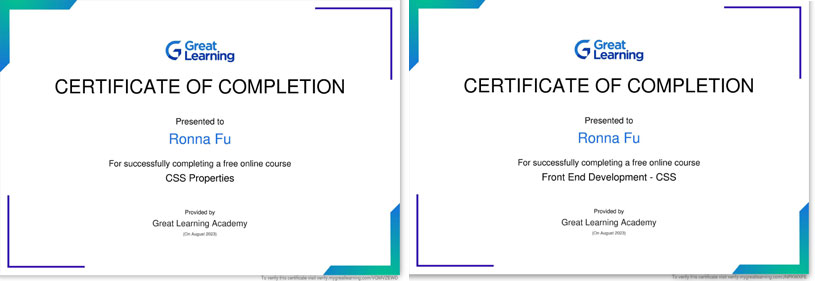

The acronym CSS stands for “Cascading Style Sheets.” In web design and development, it is a style sheet language used to regulate the visual presentation and layout of HTML content. CSS is used to specify how elements of a web page should appear and be placed on screens or other media devices.
The CSS term “cascading” describes how styles are applied in a hierarchy. Styles can be specified at many levels, such as directly within HTML elements, using style tags in the document’s <head>, or in distinct external CSS files.
The way CSS functions is by offering a set of rules that specify distinct stylistic characteristics for specific HTML components. These characteristics range from borders and spacing to colours, typefaces, and more. Web designers and developers can construct consistent and aesthetically pleasing websites while retaining a clear structure by separating the content (HTML) from its presentation (CSS).
Some key concepts of CSS are as follow:
Selectors are patterns that are used to focus on particular HTML components. The items to which the CSS rules will be applied are chosen via selectors.
Values provide the precise style elements that will be altered, such as “colour” or “font-size.” Values are the settings that have been applied to those properties, like “blue” or “16px.”
CSS classes and IDs are used to categorise items and apply particular styling to them. While IDs are intended to serve as specific identifiers for particular items, classes are reusable and can be used to multiple elements.
The box model specifies the content, padding, border, and margin of elements as well as how they are shown. Controlling spacing and layout is essential.
CSS is used to develop responsive web designs, which change to fit various screen sizes and devices. A CSS feature called media queries enables styles to be applied based on the features of the screen.
External style sheets are independent CSS files that can be created and then linked to HTML documents. It is simpler to maintain and update.
CSS attributes have the ability to inherit values from parent elements, enabling uniform styling between nested items.
You can apply styles to particular states of elements (like hovering over a link) or build virtual elements (like putting information before or after an element) using pseudo-classes and pseudo-elements.

My interest in the subject led me to educational providers like Greater Learning and HubSpot. To stay up to date on the latest in web design, I am continuously researching, learning, and educating myself.